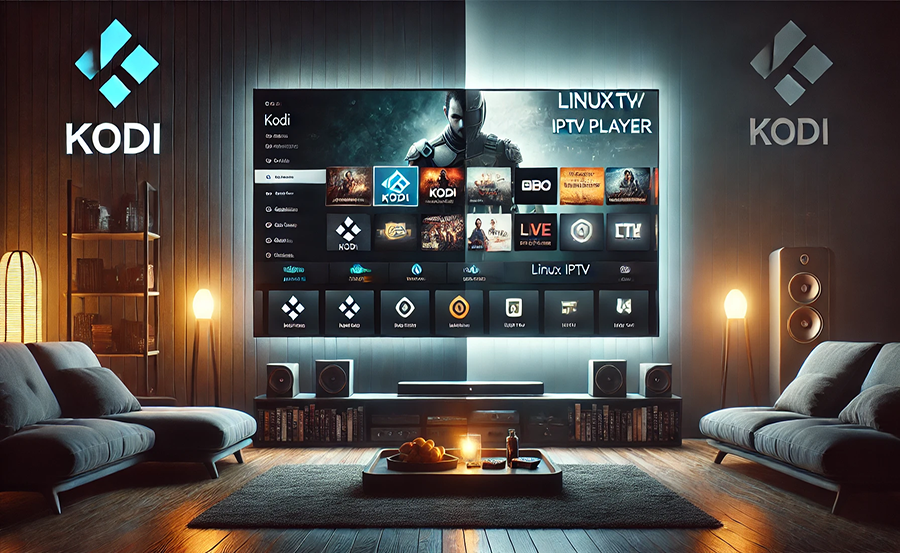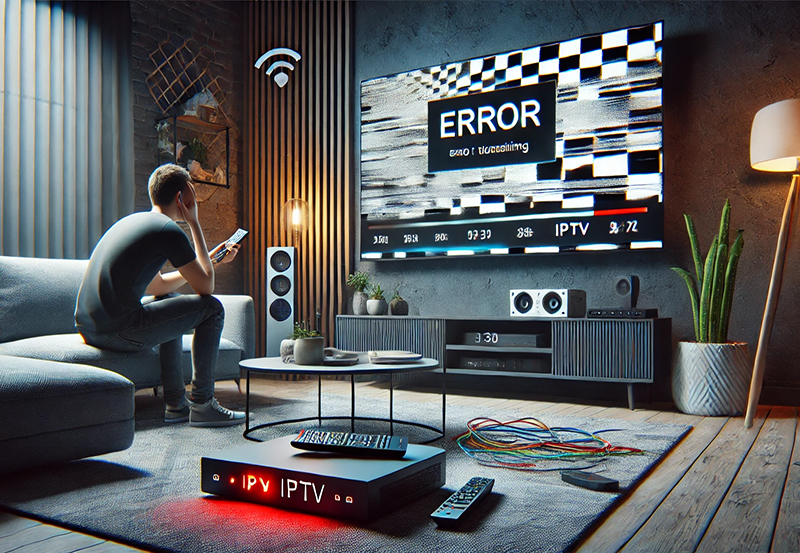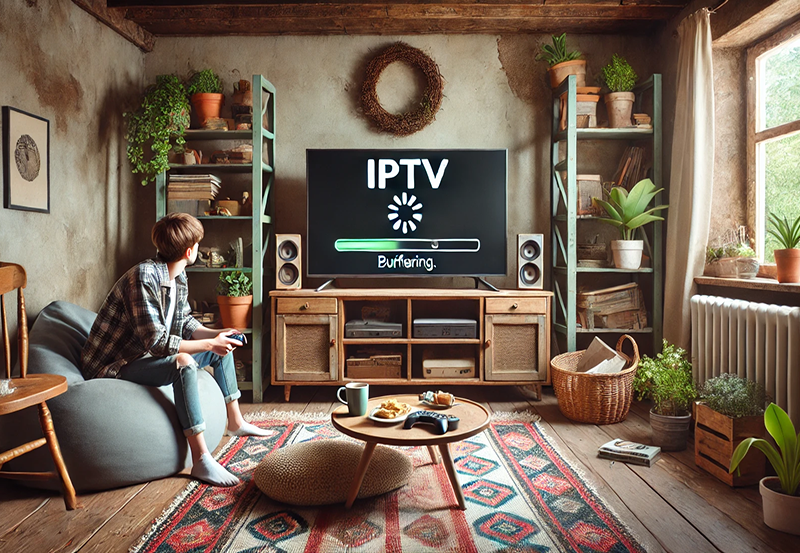A smart TV Box, or Smart STB, is revolutionizing the way we view television, especially for those looking for flexibility and variety. Gone are the days of cable TV lockdowns. Today, Smart STB offers a seamless gateway to a world of diverse content. Whether you’re tech-savvy or just starting out, this guide aims to walk you through the essentials and benefits of using Smarters IPTV and similar services.
From accessing IPTV for international channels to bringing a personalized touch to your viewing experience, Smart STBs are paving the way. Imagine redefining your IPTV watching experience with easy access to channels from across the globe. Let’s explore some of these benefits and key features, and see why more people are cutting the cord in favor of smarter options.
Understanding Smart STB
What is a Smart STB?
Smart STB, or Smart Set Top Box, refers to a device that connects your television to the internet. It acts like a tiny computer specifically designed for streaming purposes. With a Smart STB, you can access internet-based services like Smarters IPTV, an array of applications, and a wide variety of content that traditional television services cannot offer.
Pro Tip:
Get high-quality streams with Affordable IPTV services for a world-class viewing experience.
Unlike your usual TV setup, a Smart STB doesn’t confine you to watching regular, predetermined channels. Instead, it allows the flexibility to choose from thousands of content providers globally, offering IPTV for international channels and localized viewing pleasure.
Basic Components of Smart STB
At its core, a Smart STB includes several components that work together to deliver an enriching TV experience. These include:
- Operating System (OS): The software powering the device, usually Android or a bespoke OS, making it user-friendly and versatile.
- Remote Control: A sleek design contributing ease of navigation at your fingertips.
- Connectivity Options: Ranging from Wi-Fi, Ethernet, to USB ports, ensuring you’re always connected.
Besides these, many Smart STBs come with enhanced features such as voice control, making them not just innovative but incredibly convenient to use.
Key Benefits of Smart STB
Smarter Television Watching
Switching to a Smart STB like Smarters IPTV is an upgrade on multiple fronts. For one, it redefines your IPTV watching experience by offering simple, user-friendly interfaces and an extensive channel lineup. The freedom to tailor your viewing schedule is unbeatable.
You choose when and what to watch without the constraints of fixed broadcast schedules. This flexibility doesn’t just enhance user independence but significantly boosts satisfaction, providing a personalized touch to what we once considered a routine chore—watching television.
Access to International Channels
One of the standout advantages of utilizing a Smart STB is accessing IPTV for international channels. No longer are you limited by regional restrictions or subjected to local programming only. With Smart STBs, enjoy global content at your fingertips—whether it’s news from another continent or entertainment shows from a different culture.
Providing coverage of various international channels ensures you’re not missing out. For expatriates, travelers, or even language learners, this feature is revolutionizing television, bringing a slice of home or a touch of new content to the screens, wherever you are.
Cost Efficiency
In today’s economic climate, finding cost-effective alternatives is crucial. A Smart STB, paired with IPTV services such as Smarters IPTV, can often be more affordable than traditional cable services. You select and pay for only the channels you desire, eliminating unnecessary costs.
Without having to sign up for exorbitant cable packages just to access a few desirable channels, the savings add up. There’s more financial room for you, and this financial unburdening is another reason so many viewers are making the switch.
Features of Smart STB
Content Variety
The range of content available on Smart STBs is virtually limitless, from on-demand movies, TV shows, sports events, to specialty channels that cater to niche interests. This kind of accessibility is part of why audiences worldwide are gravitating toward these devices.
Smart STBs offer both live TV broadcasts and an expansive library of saved programming options. This can include content aggregation from platforms like YouTube, Netflix, or alternative streaming mediums, integrated directly into your STB’s operating system for seamless viewer enjoyment.
User-Friendly Interface
Usability is paramount, and modern Smart STBs shine in this department. With sleek interfaces designed to accommodate users of all ages, navigating different apps and content is straightforward.
Most devices come with customizable interface options, allowing users more control over what they see when navigating menus and selecting content, making the user experience entirely refined and user-centric.
High-Definition and Beyond
Many Smart STBs support HD or even 4K quality streaming, providing an uncompromised visual experience. Couple this with high-quality audio outputs, and your television becomes a home theater experience without leaving your living room.
This feature enhances even the most mundane viewing, elevating simple TV shows or movies to cinematic experiences, captured with crisp clarity and immersive sound.
Integration with Smart Home Devices
A forward-thinking feature of Smart STBs is their capacity to integrate with other smart home devices. With compatibility for Alexa or Google Assistant, controlling your television is as easy as issuing a voice command.
Integration possibilities extend beyond simple command issuance. Imagine adjusting the lighting to dim automatically when you start a movie or scheduling TV times seamlessly with your digital calendar—an interconnected home ecosystem at play.
Choosing the Right Smart STB for You
Assessing Your Viewing Preferences
Choosing a Smart STB that aligns with your viewing habits is vital. Consider what content is essential to you: are international channels a must-have? Do you prefer streaming popular platforms directly from the box? Analyze these preferences to guide your decision.
Moreover, think about who uses the device in your household. If children are primary users, parental controls and ease of use become crucial factors. For tech enthusiasts, advanced features and wider app compatibility might be more appealing.
Comparing Hardware Specifications
An essential step in choosing the right Smart STB involves comparing hardware specifications like RAM, processor speeds, and storage capacity. These can significantly affect the performance and ability to handle multiple tasks or applications simultaneously.
While most standard models fulfill basic requirements, advanced features such as increased storage or better graphics processors might appeal to heavy users or those with specific technical needs, providing a smoother, more robust user experience.
Evaluating Connectivity Options
Connectivity options should also weigh heavily in your choice. Looking for compatibility with Ethernet or Wi-Fi, USB ports for additional storage or peripheral devices, and perhaps Bluetooth for wireless accessories, can make a difference in your Smart STB experience.
For those keen on achieving the cleanest possible setup, opting for models with comprehensive wireless connectivity options may reduce clutter and further streamline installation, adding to the aesthetic appeal of your entertainment center.
Reading User Reviews and Feedback
User reviews are invaluable when purchasing a Smart STB. Genuine insights from current owners often reveal practical details about a device’s functionality, quirks, and reliability. They are typically the pulse to rely upon when comparing real-world device performance.
Always pay close attention to reviews detailing long-term use, as these provide snippets of potential wear-and-tear issues. Comparing feedback across multiple platforms can offer a balanced narrative to guide responsible purchasing decisions.
The Potential of Smart STB in Future Television
The Smart STB is more than a trend; it reflects a shift in how viewers interact with visual media. With ongoing advancements in technology, the feature set of these devices will likely expand—they may become integral parts of the smart homes of the future.
As more users come to appreciate the flexibility and freedom provided by a Smart STB, its role in reshaping our television habits becomes clearer. Sustainable growth and innovation could soon transform them from an accessory to a household staple.
FAQ Section

What is Smarters IPTV and why is it popular?
Smarters IPTV is an application for streaming IPTV content, offering a wide array of channels and on-demand content. It’s popular for its user-friendly interface, extensive compatibility, and the flexibility it provides in viewing preferences.
How does using a Smart STB redefine your IPTV watching experience?
It allows users to go beyond traditional broadcast limits, offering unparalleled flexibility, diverse content, and seamless integration with other devices—resulting in a highly personalized and satisfying viewing experience, unmatched by standard TV setups.
Are Smart STBs suitable for accessing IPTV for international channels?
Absolutely. With the capability to stream content from around the world, Smart STBs are perfect for accessing international channels and offer content diversity that global audiences crave, which is particularly beneficial for expatriates and linguists.
Do I need a high-speed internet connection for a Smart STB?
While not mandatory, a high-speed internet connection significantly enhances the experience, ensuring smooth streaming, reduced buffering, and high-definition video quality. Faster internet speeds unleash the full potential of your Smart STB.
Can a Smart STB replace traditional cable TV services?
Many users replace cable TV with Smart STBs due to their flexibility, cost-effectiveness, and access to a wide range of content without regional or channel limitations, offering a viable alternative that fits modern lifestyle needs.
What is IPTV? A Beginner’s Guide to Internet Protocol Television





